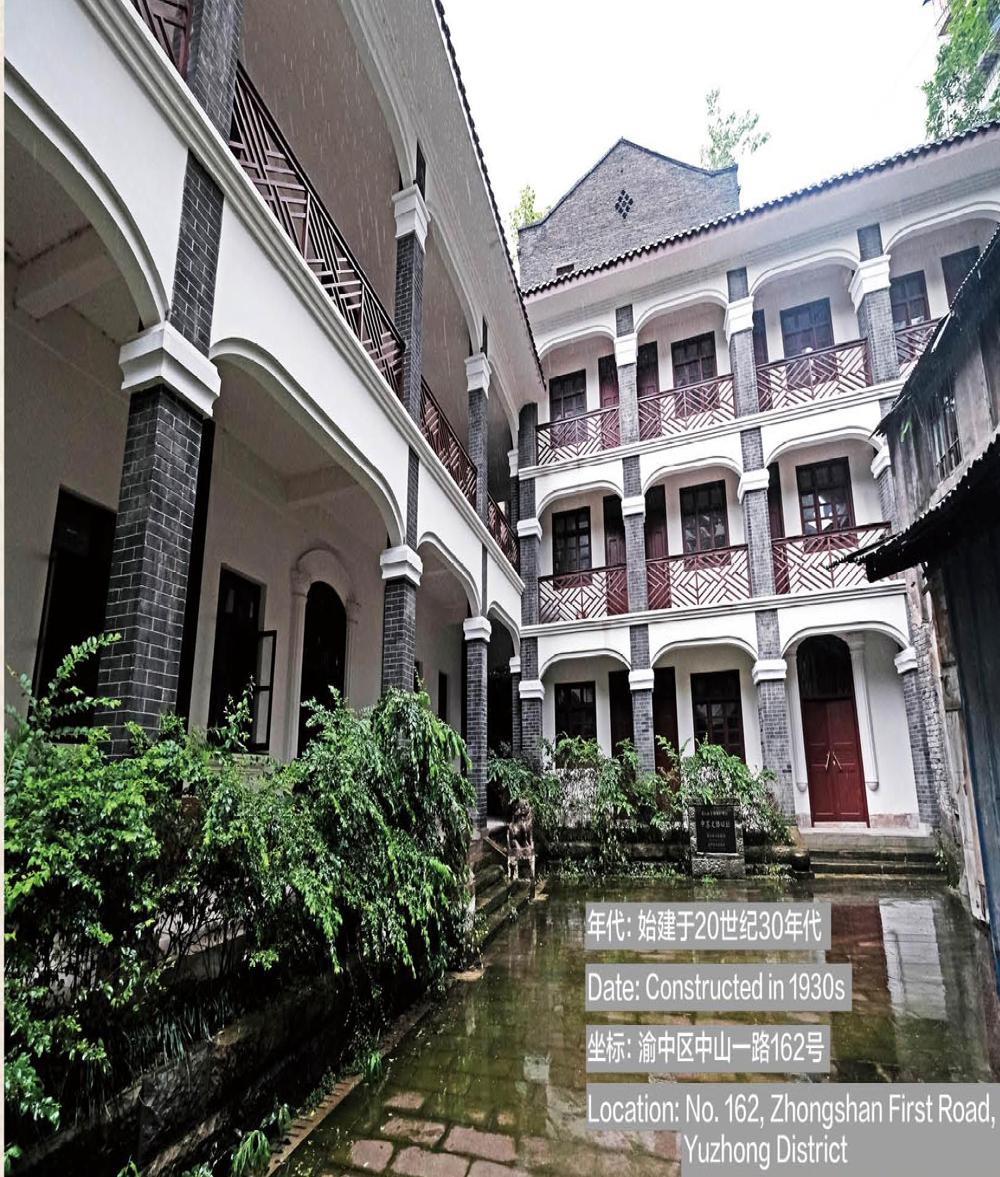中苏文化协会旧址
2020-08-31杨艳
杨艳


渝中區七星岗通远门外的主干道中山一路旁,有两栋别致小楼,主楼和副楼相连,中西式砖木结构建筑,这就是中苏文化协会旧址。
两栋建筑均为小青瓦歇山式屋顶,西式檐廊,外墙为砖砌抹灰,底层为石板铺地,基础为石作。建筑总面积约940平方米,占地面积910平方米。主楼坐东向西,一楼一底,石梯前有一对1米高的石狮。副楼坐北向南,二楼一底。
中苏文化协会的创办人张西曼,是著名的国民党左翼人士、中国最早传播马列主义的社会活动家之一。五四运动前后,他参与发起社会主义研究会,翻译出版《俄国共产党党纲》。
1935年10月,张西曼与长兄张仲钧、画家徐悲鸿等人在南京发起创建了中苏文化协会。抗战时期,中苏文化协会迁到重庆黄家垭口(现渝中区中山一路与捍卫路交汇处附近),该机构在中共中央南方局支持下,实际成为大后方文化抗战的活动中心,也是南方局联系各界人士,开展统一战线工作的重要阵地,特别是郭沫若、屈武、阳翰笙等重要人物和秘密党员进入文协领导层后,该机构为中共加强与苏联以及国际反法西斯同盟国的联系,争取国际社会对中国抗战的支持发挥了重要作用。
抗战时期,中共中央南方局经常利用中苏文化协会举办讲演会、纪念会、座谈会、展览会,联系各界人士,吸引和团结民众。曾举办陕甘宁边区木刻展,上映过苏联影片,中华剧艺社也曾在此排练进步戏剧。中苏文化协会作为公开的民间机构,是中苏开展民间文化交流的重要渠道,文化及社会各界合法交际的重要场所,曾很好地起到增进和推动中苏两国人民了解和友谊的桥梁作用。
中苏文化协会是研究抗战史、外交史、南方局史的重要物证,具有不可替代的重要历史和文物价值。2000年,中苏文化协会旧址由重庆市人民政府公布为市级文物保护单位。现已修复完毕,即将对外开放。
图片/重庆市文物保护志愿者服务总队提供
There are two distinctive small buildings beside the main road of Zhongshan First Road outside the Tongyuan Gate of Qixinggang in Yuzhong District. The main building and the annex building are connected with Chinese and Western-style brick-wood structure. This is the former site of the Sino-Soviet Cultural Association.
The two buildings are both constructed with small grey tiles and Xieshan-style roofs, western-style eaves, brickwork and plastering on the exterior walls, slate paving on the bottom floor, and stone foundations. With a total construction area is about 940 square meters, they cover an area of 910 square meters. The main building faces west with two floors. There of a pair of 1-meter -high stone lions in front of the stone stairs. The annex building faces south, with three floors.
Zhang Ximan, the founder of the Sino-Soviet Cultural Association, was a well-known leftist member of the Kuomintang and one of the earliest social activists in China to spread Marxism-Leninism. Around the May Fourth Movement, he participated in the launch of the Socialism Research Association, translated and published the Russian Communist Party Programme.
In October 1935, Zhang Ximan, his elder brother Zhang Zhongjun, painter Xu Beihong and others initiated the establishment of the Sino-Soviet Cultural Association in Nanjing. During the War of Resistance against Japanese Aggression, the Sino-Soviet Cultural Association moved to Chongqing Huangjiayakou (now near the intersection of Zhongshan First Road and Hanwei Road in Yuzhong District). With the support of the Southern Bureau of the Communist Party of China, the organization actually became the center of anti-Japanese cultural activities in the rear area and also an important position for the Southern Bureau to contact people from all walks of life to carry out united front work. In particular, after Guo Moruo, Qu Wu, Yang Hansheng and other important figures and secret party members entered the leadership of the Cultural Association, the institution played an important role in strengthening the ties of Communist Party of China with the Soviet Union and the international anti-fascist allies, and winning the support of the international community for China's War of Resistance against Japanese Aggression.
During the War of Resistance against Japanese Aggression, the Southern Bureau of the Central Committee of the Communist Party of China often used the Sino-Soviet Cultural Association to hold lectures, commemorative meetings, symposiums, and exhibitions to contact people from all walks of life to attract and unite the people. It has held a woodcut exhibition in the Shaanxi-Gansu-Ningxia Border Region, and has shown Soviet films, and the China Theatre Company has also rehearsed progressive dramas here. As an open non-governmental organization, the Sino-Soviet Cultural Association was an important channel for Sino-Soviet non-governmental cultural exchanges and an important place for legal communication between cultural and social sectors. It had served as a bridge to enhance and promote the understanding and friendship between the peoples of China and the Soviet Union.
The Sino-Soviet Cultural Association is an important material evidence for studying the history of the War of Resistance against Japanese Aggression, the history of diplomacy, and the history of the Southern Bureau, giving it an irreplaceable important historical and cultural value. In 2000, the former site of the Sino-Soviet Cultural Association was announced by the Chongqing Municipal People's Government as a Chongqing Cultural Relics Protection Unit. It has been repaired for now and will be opened to the public soon.
Picture/Chongqing Cultural Relics Protection Volunteer Service Corps
